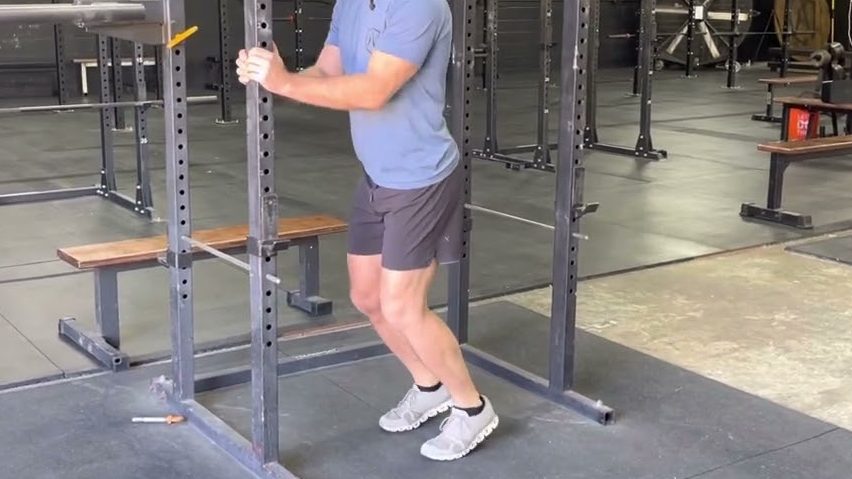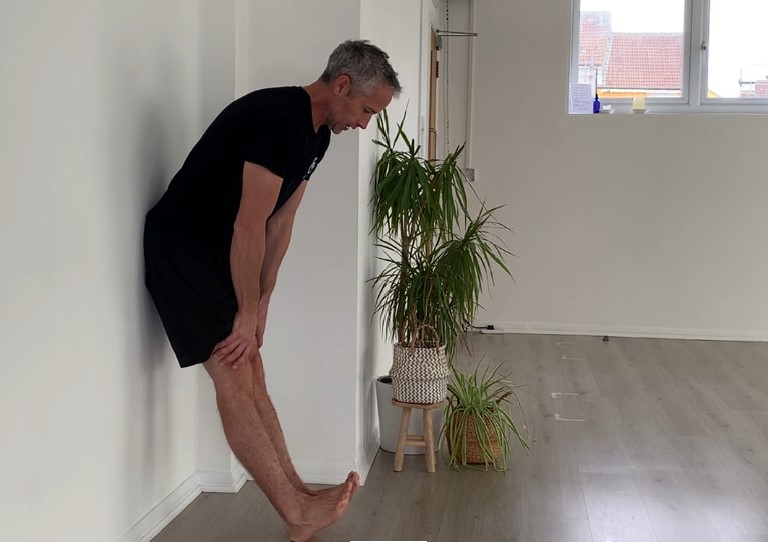
KOT Calf Raise
The KOT Calf Raise is a very efficient exercise. It targets the calf muscles and is great for mobility training and strengthening lower leg muscles. Including KOT Calf Raises in your routine can produce impressive benefits. Whether you’re an athlete looking to increase performance, someone searching for knee pain relief, or just hoping to improve overall mobility. Moreover, This article will help you advance your mobility training. Indeed, by examining the advantages, method, and variants of this effective exercise.
Understanding the KOT Calf Raise
The KOT Calf Raise is a mobility exercise. It’s main use is to build the gastrocnemius and soleus muscles of the calf. In order to ensure that the knees track over the toes throughout the action during this exercise, it is very important to maintain appropriate knee alignment. The KOT Calf Raise can help you strengthen your lower legs, increase ankle mobility, and stabilise your entire lower body.
Benefits of the KOT Calf Raise
- Strengthened Calf Muscles: The KOT Calf Raise targets the calf muscles particularly, which helps to increase strength and stamina. For many activities, like walking, running, and jumping, strong calf muscles are crucial.
- Enhanced Ankle Mobility: When you perform the KOT Calf Raise with good knee alignment, your ankle mobility is improved, particularly in dorsiflexion. By enabling more effective movement patterns and lowering the likelihood of accidents, this increased ankle mobility.
- Improved Balance and Stability: The KOT Calf Raise puts a focus on optimal knee alignment, which tests your balance and stability. You can increase overall lower body stability and lessen your chance of falling or suffering an ankle injury by using your calf muscles and keeping your knees and toes in alignment.
- Knee Pain Relief: Exercises like the KOT Calf Raise, which strengthen the calf muscles, can help reduce knee pain. This exercise helps to treat and prevent knee discomfort by enhancing the stability and alignment of the knee joint.
Mastering the Technique
- Starting Position: Place your feet hip-width apart while keeping your knees slightly bent and your abdominal muscles tight.
- Execution:
- a. Lift your body weight onto the balls of your feet by slowly lifting your heels off the ground.
- b. To maintain good knee alignment, make sure your knees track over your toes during the exercise.
- c. Hold the higher position for a brief period of time while feeling your calf muscles contract.
- d. After the required number of repetitions, slowly descend your heels to the ground.
Variations for Progression
- Single-Leg KOT Calf Raise: Carry out the exercise while raising only one leg at a time to add difficulty and work the calf muscles harder.
- Weighted KOT Calf Raise: To increase resistance and the intensity of the workout, hold dumbbells or wear a weighted vest while executing the exercise.
- Eccentric KOT Calf Raise: Pay special attention to the lowering part of the exercise. Slowly lower your heels to the floor to lengthen the period that your calf muscles are under tension.
- Calf Raises on an Incline: To enhance range of motion and specifically target the calf muscles, perform the exercise on a raised surface, such as a step or wedge.
Safety Considerations and Modifications
- Start with Bodyweight: To establish proper technique and gradually raise the difficulty of the KOT Calf Raise, start with bodyweight if you are unfamiliar with it or have mobility issues.
- Correct Alignment: Throughout the exercise, make sure your knees are tracking over your toes. In order to maximise workout effectiveness and reduce the risk of knee or ankle discomfort, proper alignment is crucial.
- Consult a specialist: Consult with a trained healthcare or fitness professional for advice catered to your particular needs if you have a history of knee or ankle issues or if you have any concerns about practising the KOT Calf Raise.
KOT Calf Raise
Your lower leg strength, ankle mobility, and overall stability can all be significantly improved by including the KOT Calf Raise in your mobility training regimen. You can improve performance, reduce knee pain, and increase mobility by calf muscle development and maintaining good knee-to-toe alignment. Start using the KOT Calf Raise in your exercises to feel the difference it may make in your lower body’s strength and mobility.
for more subscribe to mobilityabilityagility.com

